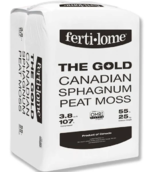The texture&structure of coir is better than milled peat, imo. The main caveats are that coir can be high in salts (literally sea salt, which ought to be washed out but apparently that is not the case 100% of the time), and that it lacks fertilizer. Plants do not grow optimally in 100% coir.
It also has a higher pH than peat, which is not good if you grow acidophiles.
As for growing seedlings only able to grow in rough peat, what seedlings are you growing? I would say that the opposite is true. Seedlings do great in the finer structure. Especially after germination. Damping off/fungus is caused by humidity and heat, not the soil type. You may want unmilled peat to improve soil structure for mature plants. I don't really get why they mill down peat so finely, and then try to add in something else to improve soil structure& aeration. Not sure why unmilled or partially milled peat are not freely available on the consumer market.
For seedlings, a potting mix that is a bit lower in fertilizer usually works well as a starter mix.
A soilless mix can work very well, though. Likely, you are growing tree seeds. Here seedless is often a good way to go. But if you want to grow your bell pepper or tomato seeds, go cheap peat based potting mix. If you have like pines or maples or something, 33/33/33 peat, vermiculite/shredded sphagnum moss can work very well. Sharp sand may be added also. But make sure it is horticultural grade, cheap sharp sand could come from bricks that might have been recovered by breading down a chemical plant, for example. This type of soilless mix is also excellent for rooting cuttings.
I know a good Dutch brand now. But I can only buy it for the normal price if I buy a pellet of 52 bags. Or I can buy an individual bag for double the price.
The problem is that the only way to figure out the particle size of a potting mix is to buy a bag, then open it and see it for yourself. Unless you buy a literal block of unprocessed stuff like Bonsainut linked to.




